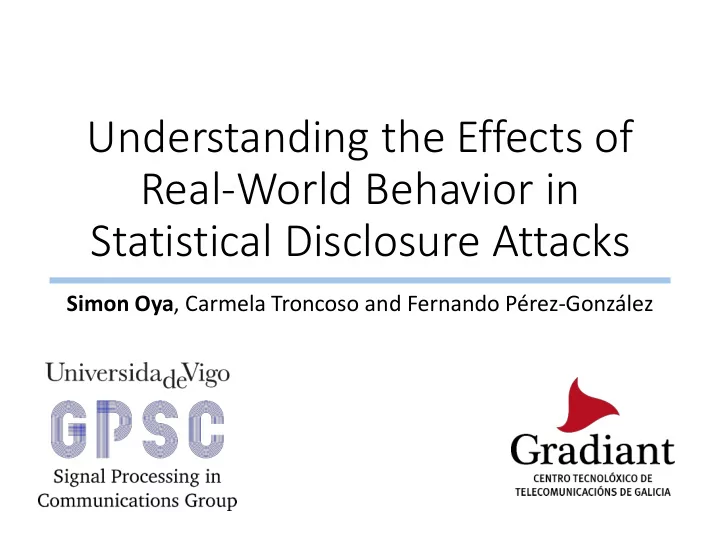

Understanding the Effects of Real-World Behavior in Statistical Disclosure Attacks Simon Oya , Carmela Troncoso and Fernando Pérez-González
In Introduction. Mix ixes. MIX The adversary is able to learn Alice’s sending profile!!! 2
In Introduction. Mix ixes. MIX Anonymity? How? • Changing appearance (re-encryption) 3
In Introduction. Mix ixes. MIX Anonymity? How? • Changing appearance (re-encryption) The adversary is able to learn Alice’s sending profile with the timing information!!! 4
In Introduction. Mix ixes. ANONYMOUS MIX Anonymity? How? • Changing appearance (re-encryption) • Removing timing information (delays) 5
In Introduction. LSDA (I) (I)
In Introduction. LSDA (I) (I) 7
In Introduction. LSDA (I) (I) Least-Squares 8 Disclosure Attack
In Introduction. LSDA (II (II) 9
Real data: 220.000 emails sent between employees of Enron Corporation . http://www.cs.cmu.edu/~./enron/ 400.000 location check-ins from Gowalla social networking website. http://snap.stanford.edu/data/loc-gowalla.html 180.000 posts to the public mailing lists of Indimedia http://lists.indimedia.org/ 10
Motivation: LSDA’s analysis falls short 11
Real-World Behavior. In Input process. Emails dataset 12
Real-World Behavior. Output process. Average number of receivers chosen #messages Mailing List Location Email =2 1.85 1.03 1.29 =3 2.71 1.05 1.46 =4 3.53 1.06 1.53 =5 4.40 1.08 1.53 ≥6 13.56 1.11 1.57 13
New Theoretical Analysis (I) (I) Multinomial output Maximum variance output Global contribution Individual term Variance of the number of messages sent “uniformity” Number of rounds observed 14
New Theoretical Analysis (II (II) 15
Results 16
Thank you!! simonoya@gts.uvigo.es 17
Recommend
More recommend